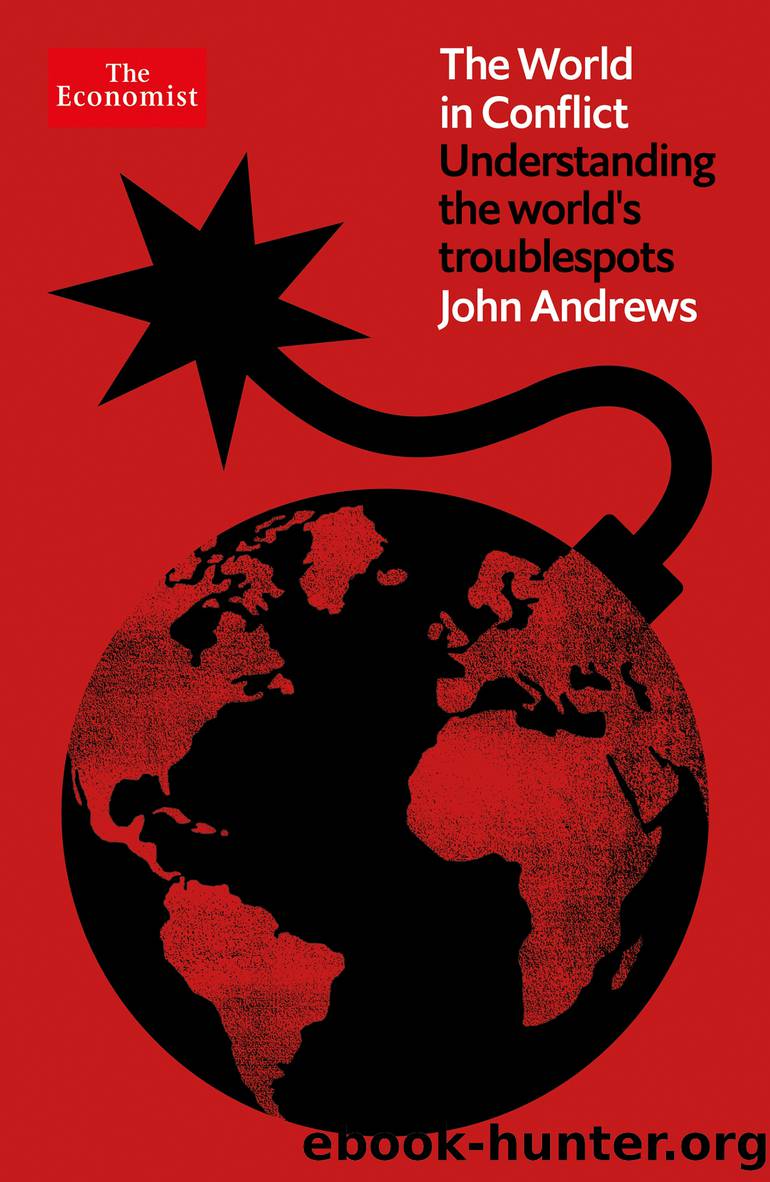The World in Conflict: Understanding the World's Troublespots by John Andrews

Author:John Andrews
Language: eng
Format: epub
Publisher: Pegasus Books
Published: 2023-08-02T00:00:00+00:00
Italy
With a population (shrinking from a low birth rate) of just over 59 million Italy is almost on a par with the UK and France in demographic and economic weight. The same, however, is not true in military clout. Though Italy has some 171,000 active military personnel (plus a territorial force of 109,000 carabinieri), compared with 144,200 for the UK and 204,000 for France, it is far less bellicose.
This does not mean it is inactive. As a founder member of NATO and the European Union, Italy willingly takes part in UN peacekeeping missions from Lebanon to South Sudan and in EU missions from Bosnia to Mali â hence 44 international deployments in 2020 across four continents of almost 10,000 personnel. However, Italy did not engage in the US-led 2003 invasion of Iraq. Instead, its troops arrived towards the end of that year only after President George W. Bush had declared an end to major combat operations â and those 3,200 troops were withdrawn in 2006.
This relative reticence doubtless owes much to Italyâs history as a modern country (unification as the Kingdom of Italy occurred only in 1861 and the Republic of Italy was declared only in 1946 after Italyâs defeat in the second world war). As fears grew after the first world war of a communist revolution in Italy along the lines of the Russian one, the country turned to fascism and the rule of Benito Mussolini, first as prime minister in 1922 and then from 1925 as outright dictator. Mussoliniâs expansionist zeal in 1935 added Ethiopia as a conquered possession to join Libya, which Italy had seized from Ottoman Turkey in 1912. As with Germany, the disastrous experience of fascism and defeat in the second world war has left Italy with a mistrust of militarism.
Another legacy was a powerful Italian communist party, which in the 1970s commanded the support of a third of the electorate before, in 1991, it evolved into the less radical Democratic Party of the Left (PDS). At the same time, the corruption of Italian politics and the support by the United States of the Christian Democrats bred an extra-parliamentary extremism dedicated to violent revolution.
The most prominent of the extremists have been the Red Brigades (Brigate Rosse), a Marxist-Leninist group formed in 1970 and willing to use kidnapping, bombings, bank robberies and assassination as the means to its revolutionary ends.
The Red Brigadesâ most famous exploit was the kidnapping in 1978 of Aldo Mori, a long-serving former Christian Democrat prime minister. Mori had been trying to effect a historic compromise in Italian politics that would have brought the Communist Party of Italy (PCI) into government with the Christian Democrats. That idea (which did not please the United States, worried by Soviet influence over the PCI) died with Moriâs execution by the Red Brigades after 54 days in captivity. Another exploit was the kidnapping in 1981 of an American brigadier-general stationed in Italy as a senior figure in the NATO command (after 42 days the general was rescued by an Italian anti-terrorism team).
Download
This site does not store any files on its server. We only index and link to content provided by other sites. Please contact the content providers to delete copyright contents if any and email us, we'll remove relevant links or contents immediately.
Man-made Catastrophes and Risk Information Concealment by Dmitry Chernov & Didier Sornette(5596)
The Revenge of Geography: What the Map Tells Us About Coming Conflicts and the Battle Against Fate by Kaplan Robert D(3928)
Zero Waste Home by Bea Johnson(3618)
In a Sunburned Country by Bill Bryson(3334)
Good by S. Walden(3321)
COSMOS by Carl Sagan(3316)
The Fate of Rome: Climate, Disease, and the End of an Empire (The Princeton History of the Ancient World) by Kyle Harper(2839)
Camino Island by John Grisham(2700)
A Wilder Time by William E. Glassley(2661)
Organic Mushroom Farming and Mycoremediation by Tradd Cotter(2547)
The Ogre by Doug Scott(2477)
Human Dynamics Research in Smart and Connected Communities by Shih-Lung Shaw & Daniel Sui(2414)
Energy Myths and Realities by Vaclav Smil(2352)
The Traveler's Gift by Andy Andrews(2280)
9781803241661-PYTHON FOR ARCGIS PRO by Unknown(2242)
Inside the Middle East by Avi Melamed(2212)
Birds of New Guinea by Pratt Thane K.; Beehler Bruce M.; Anderton John C(2156)
A History of Warfare by John Keegan(2067)
Ultimate Navigation Manual by Lyle Brotherton(2021)
